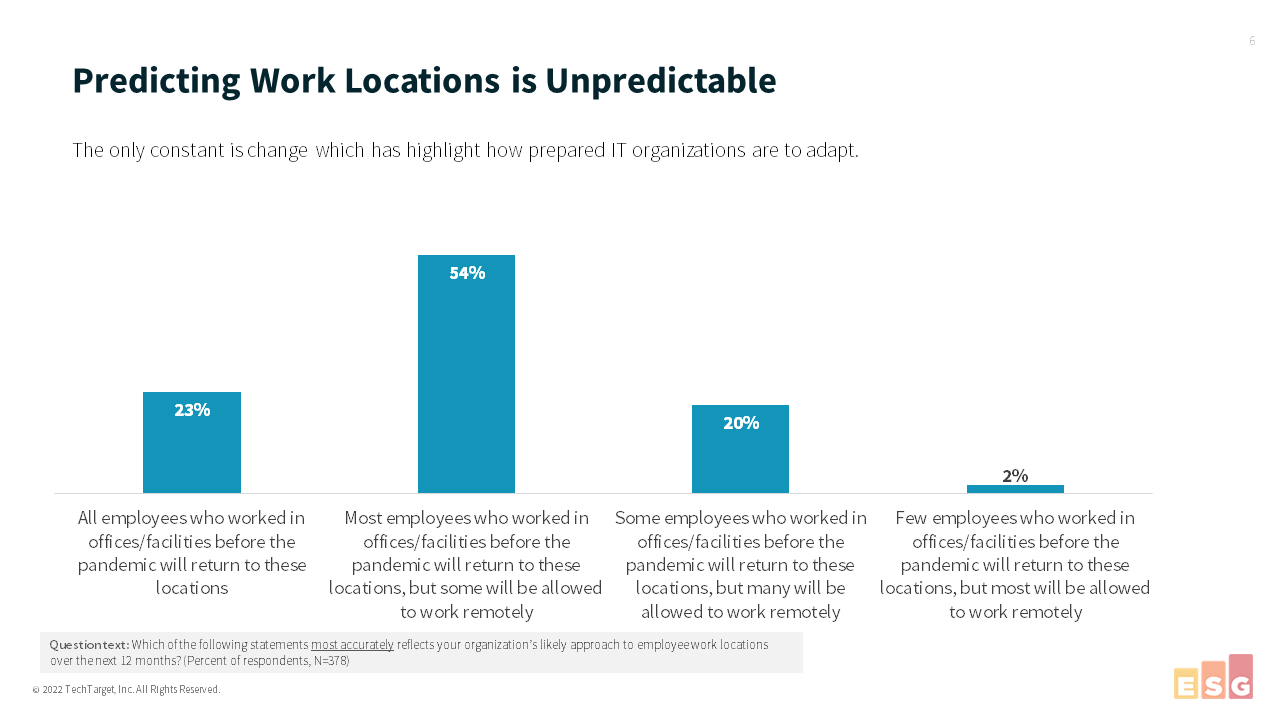There are times when technology refreshes are necessary. Now is one of those times, particularly for users of commercial laptops. The workplace has changed dramatically since the onset of the pandemic in March of 2020. Millions of workers are now working remotely or at home, many with intentions to continue working remotely in the future. This means even basic applications—think Microsoft Word or Microsoft Teams—have a new baseline of highly demanding requirements for performance, audio and video collaboration features, graphics capabilities, and battery life.
At the same time, this new world of hybrid work has opened a Pandora's box of new security threats and forever changed the dynamics of how IT teams are deploying, securing, managing, and supporting their fleets. If your organization and its users are using commercial laptops that don't incorporate the latest generation of microprocessors, you are facing unnecessary risks in delivering the kind of comprehensive, secure, flexible, and seamless experiences that are table stakes for users in this new work environment.
The changing dynamics of the workplace are impacting decisions about the commercial laptops workers are using and, more important, what they should be using. User experience is key for laptop buying decisions, whether you are an IT buyer managing fleets or a group or an individual who makes your own decisions about which laptops to use for professional needs. Particular areas of relevance are:
- Performance, including overall CPU performance, modern audio and video features, and graphics capabilities.
- Portability, including all-day battery life; docking capabilities for use at home or in the office; and portable laptop designs that offer users exceptional performance, experiences, and advanced connectivity features.
- Enterprise management and security features, including the ability to simply deliver friction-free user experiences from a single location and help provide cybersecurity protections to give users confidence that they can work from any location, without impacting productivity or performance.
User Experience in the Hybrid Workplace
Since the onset of the pandemic, the world of work has changed at a scope, speed, and velocity that is unprecedented in recent memory. Workers of all types across all industries are now working remotely or from home and may not go back to the way things were before. According to ESG research, nearly a quarter (23%) of organizations report that all employees who worked in offices before the pandemic will return to these locations, with the remainder expecting to take a hybrid approach with some or many employees continuing to work remotely in the immediate future. It's clear that hybrid work is here to stay, and employers must adjust accordingly.

Not only has work changed dramatically, so have user expectations. Employees now expect and demand a glitch-free, high-performance, and flexible experience from their devices. They need their experiences with technology to be simple, while allowing them to take full advantage of the capabilities, data requirements, and communication and collaboration features of today’s modern applications.
Organizations that prioritize employee experience in this environment experience competitive advantages. Workers can be more productive and collaborative. When they are happier, they are less likely to leave and more likely to recommend the organization to peers and colleagues. They have more freedom and flexibility in where they work and how they work, and can be more creative and iterative in solving problems and in dealing with customer needs.
One of the obstacles to maximizing the potential of hybrid work is the reality that older laptops are not up to the task of delivering this kind of experience for today’s applications, workloads, and collaborative use cases. Since the pandemic, the use of audio and video, graphics, much larger data sets, and rich content creation and presentation has changed dramatically. These changes not only impact the high-end of the market; they particularly impact the use of everyday applications such as Microsoft Word, PowerPoint, Teams, and more. In evaluating potential solutions, IT teams should also address their own concerns, particularly in areas such as simplified manageability, remote onboarding, lifecycle management, business resilience, and stronger, more scalable cybersecurity protections.
New Criteria for Commercial Laptops
A new set of criteria must now be factored into the decision-making process about when, why, and how to refresh, replace, and invest in modern laptops, including:
- User experience: When it comes to user experience, the old rules no longer apply. Collaboration takes on a new meaning when workers are not in the same space and need to rely on video, audio, and rapid file transfer to work most effectively. If users experience an increase in downtime due to older machines crashing, it negatively impacts performance, confidence, and morale.
- User expectations: The same challenges hold true for user expectations. We are in a time when workers are making new demands of their employers—and those demands include equipping them with the technology tools they need. More workers than ever, especially younger ones, are demanding a healthier work-life balance. If they can’t get it in your workplace, they are showing in record numbers that they are ready, willing, and able to move elsewhere.
- Modern applications: One of the major changes that happened in the pandemic has been a shift in how workers are using their applications, in particular the applications that impact their day-to-day productivity. It’s not just about audio and video for collaboration. Hybrid users need more battery life and higher levels of performance to deal with much larger data sets and heavy-duty multitasking to handle multiple demanding projects at one time. Even when creating or managing everyday files such as PowerPoint presentations or Word documents, speed and performance are essential.
Taking the Next Step
The workplace is not going back to the way it was. Workers have experienced the benefits of hybrid work and have new expectations for how they are treated and how well equipped they are with modern technologies. For laptop buyers, this is a critical flex point: You have the opportunity to dramatically upgrade the user experience while improving the management simplicity and security of your entire fleet.
For more information on how to choose the best modern laptops in this new era of hybrid work, please review the related article on this site, “What to Look for in Commercial Laptops for a Rich, Portable, and Secure Hybrid User Experience,” and visit AMD.

